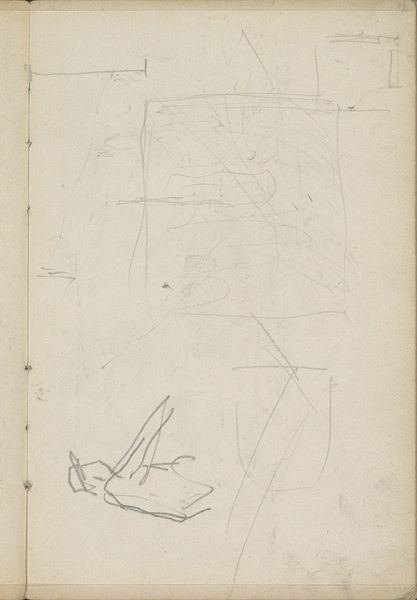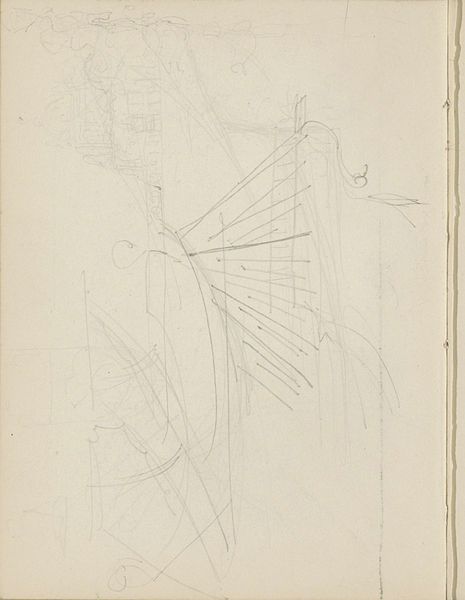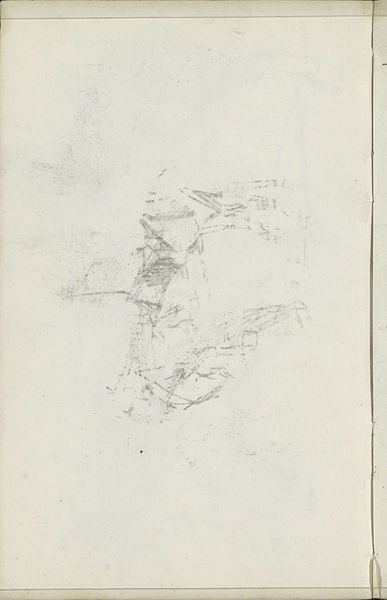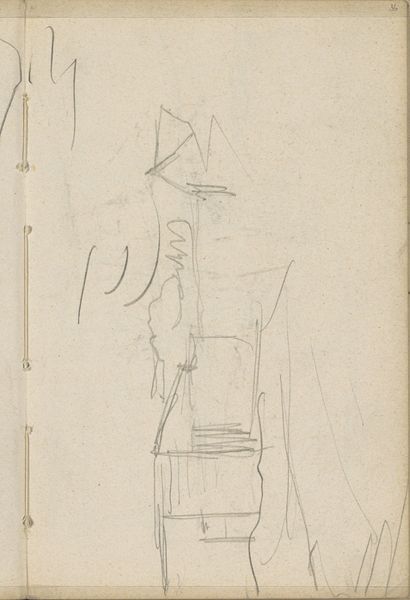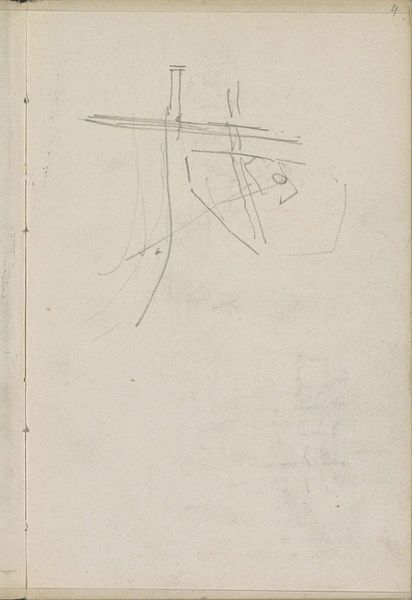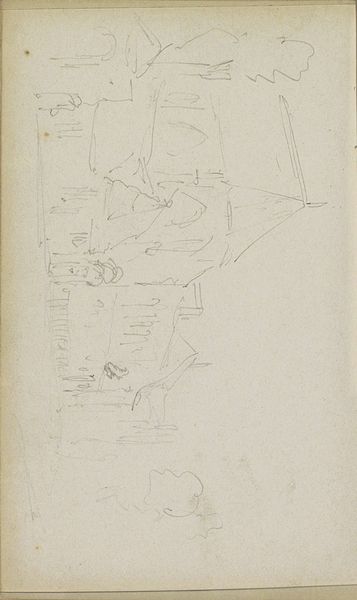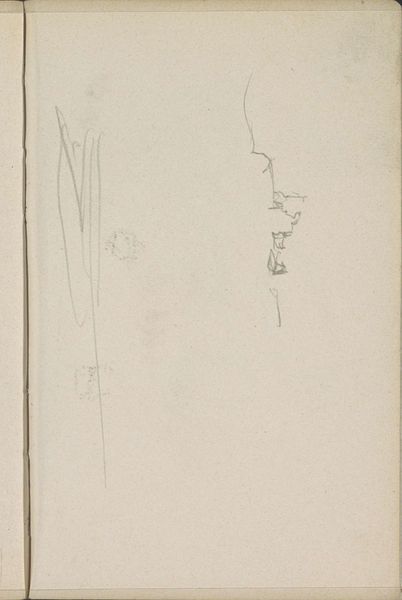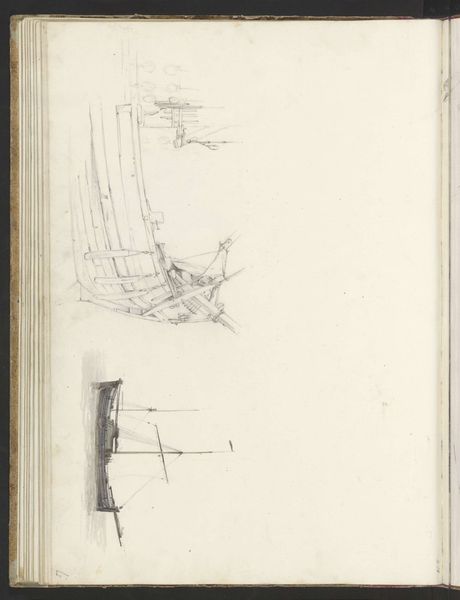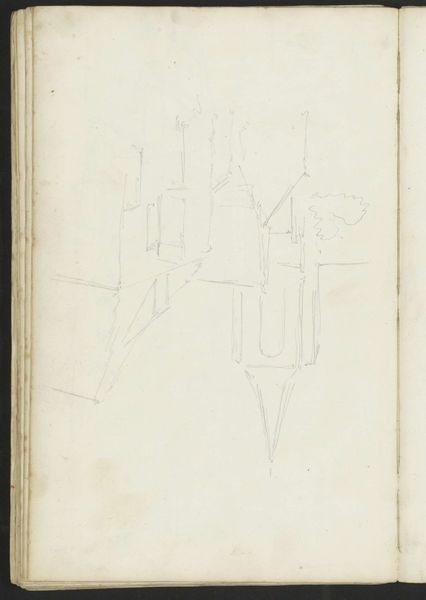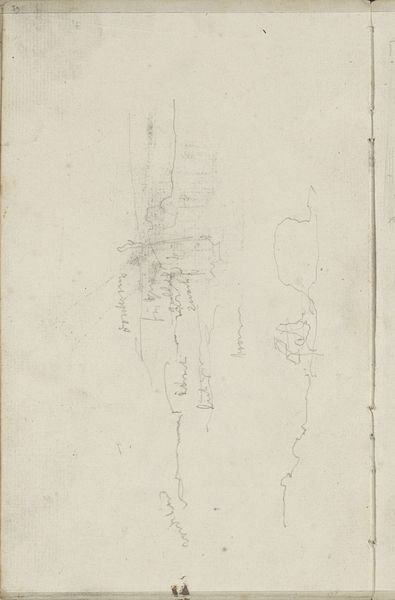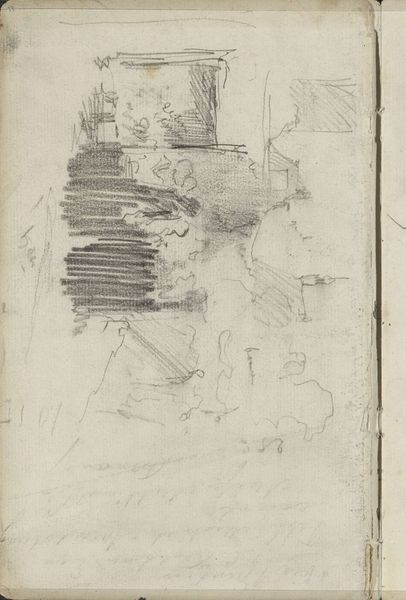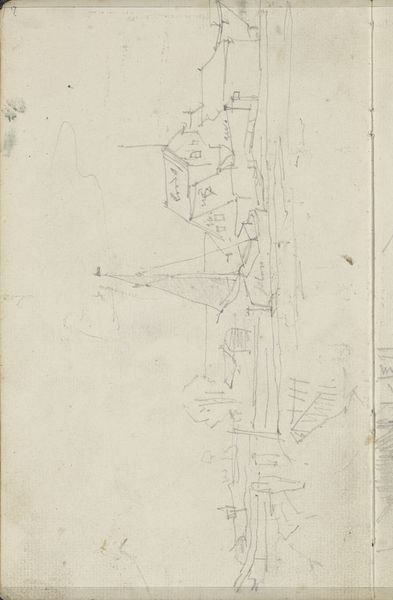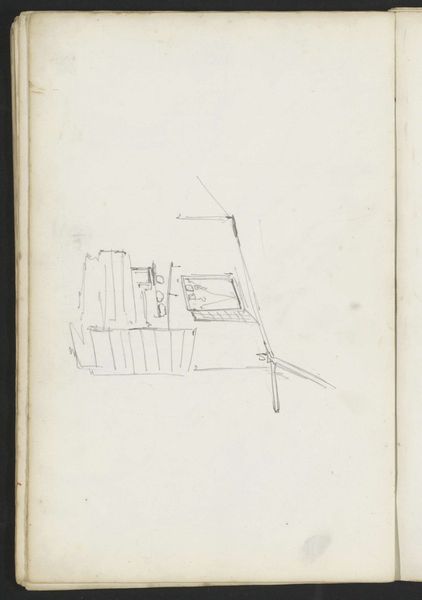
drawing, paper, pencil
#
drawing
#
landscape
#
paper
#
form
#
romanticism
#
pencil
#
line
#
realism
Copyright: Rijks Museum: Open Domain
Editor: Here we have a pencil drawing on paper entitled "Studie" which translates to 'study', made sometime between 1816 and 1852. The artist is listed as Jonkvrouw Elisabeth Kemper. The subject matter appears to be architectural, and what strikes me most is the faintness of the lines, almost as if the image is fading from memory. What do you see in this piece? Curator: The ethereal quality you noticed is key. I see more than just architecture; I see a palimpsest of cultural memory. The faint lines, drawn with pencil, hint at a fleeting glimpse of a world in transition, during a period dominated by Romanticism and nascent Realism. Editor: Palimpsest? That's a new word for me. Curator: Think of it as a surface where layers of meaning have been written and erased, leaving behind traces of what once was. Consider the symbolic weight of architecture. What does a building represent in a culture? It's a container for history, social structure, and shared values. Editor: So the fading lines aren't just about technique, but also about the disappearance of those values? Curator: Precisely. Kemper captures that feeling of a changing world where familiar landmarks, both literal and figurative, are becoming faint. Even the title, “Studie,” implies it's a practice of observation, as much as a symbol that is studied. Does this change your perspective? Editor: It does! I initially saw just a faded drawing, but now I see an exploration of time, memory, and cultural shift embedded in its imagery. It is the emotional weight attached to what’s being studied. Curator: Exactly! The piece offers an insight into cultural heritage which, until today, remained unnoticed by the audience.
Comments
No comments
Be the first to comment and join the conversation on the ultimate creative platform.
